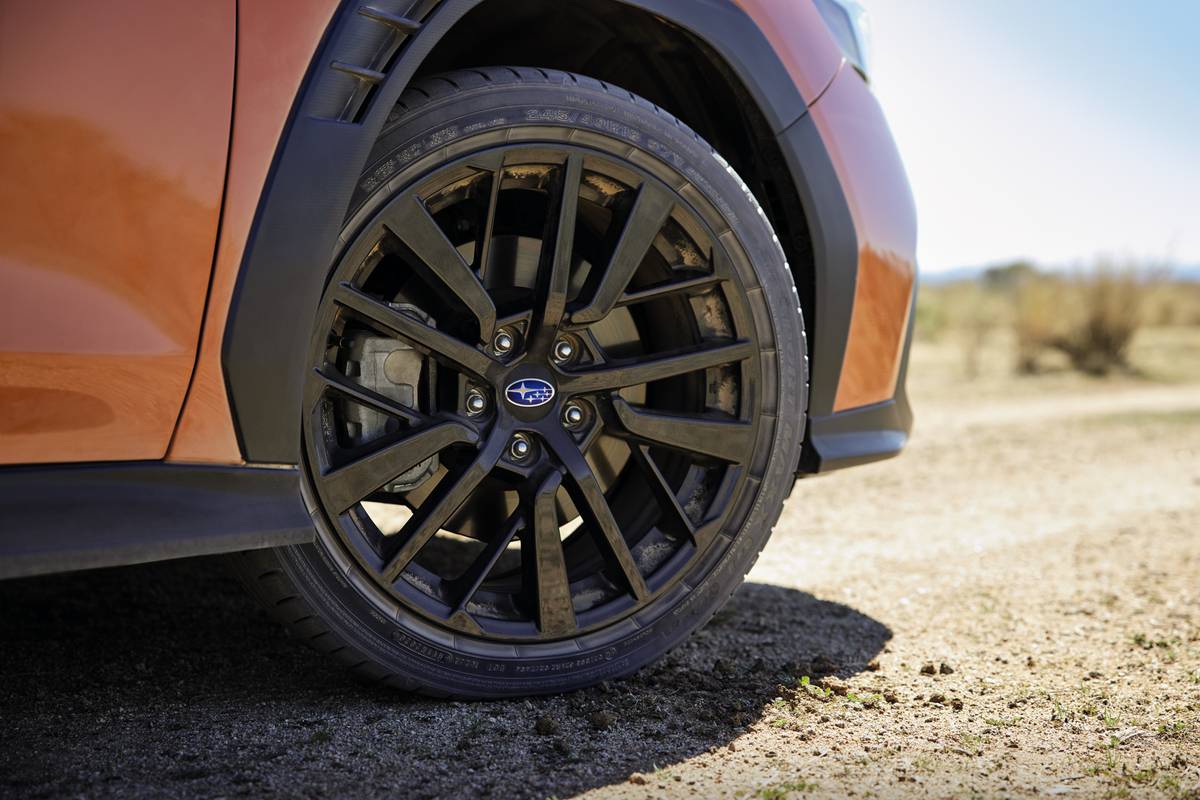What Are Run-Flat Tires?

Although run-flat tires have been around awhile, their name can be a bit misleading. Perhaps it’d be more accurate to say “run-without-air-pressure tires,” though that would also be somewhat of a mouthful.
Related: What’s the Difference Between Summer, Winter and All-Season Tires?
Whatever the name, the idea is that they can be driven on — at least for a short distance — even if they lose all their air pressure. You still have to get the tires fixed or replaced, but you don’t have to do it right then.
Normally, a flat tire looks like a tire that’s completely flat on the bottom, making it seem as though the car is riding on the wheel rather than the tire. That’s because air pressure inside is what’s normally supporting the vehicle’s weight and keeping the tire round; without that air pressure, the sidewall of the tire collapses and the tire goes flat.
On a run-flat tire, the sidewall is stiff enough and strong enough to support the vehicle’s weight even if a leak causes a complete loss of air pressure. While the sidewall does squash down a little — like a regular tire that’s a bit low on air — it doesn’t look flat, and in mild-mannered driving, the loss of pressure may not even be noticed by the driver. Thus “run-flat” seems like somewhat of a misnomer.
Why Does a Run-Flat Tire Need Air at All?
Most run-flat tires are only supposed to be run without air pressure for a limited distance and speed — often around 50 miles at a maximum of 50 mph. Why? Because without air pressure to spread the load across the tread and help dissipate the heat that builds up inside the tire, the strain on the sidewalls and high internal temperature would eventually cause the tire to degrade and fail. Also, driving dynamics in fast turns and over larger bumps aren’t as good if the tire isn’t at normal pressure.
But if a run-flat tire doesn’t look or feel much different when it has no air pressure — and running far or fast like that is dangerous — how do you know it’s “flat”?
To be equipped from the factory with run-flat tires, a car must also be equipped with a tire pressure monitor system. Some of these systems can detect the actual air pressure inside each tire, while simpler ones can only detect that one tire is spinning at a different speed than the others — which is the case with a tire that has gone flat. When low tire pressure is detected, a warning light is displayed on the instrument panel in front of the driver. Federal law has required all passenger vehicles to come with some sort of tire pressure monitor starting with the 2008 model year, but many had one earlier.
Run-Flat Downsides
Although run-flat tires certainly have their advantages, the picture isn’t entirely rosy. First, the stiff sidewalls of a run-flat tire don’t flex as easily over bumps, so ride quality — even in normal driving when they’re properly inflated — often suffers.
Second, run-flats generally cost more than regular tires. And if their “run-flat” capability is used — even for less than 50 miles at no more than 50 mph — the tire may have to be replaced, as it essentially sacrifices itself to save you from being stranded. (It often suffers internal damage that can only be detected by taking it off the wheel.) For many people, however, the extra cost is well worth the peace of mind.
More From Cars.com:
- Which Cars Have Free Maintenance for 2021?
- How Do I Find the Correct Tire Pressure for My Car?
- Is Your Check-Engine Light On? 5 of the Most Common Causes
- Why Do I Keep Getting Phone Calls About My Car’s Warranty Expiring and How Do I Stop Them?
- What Is Coolant and Is It the Same as Antifreeze?
Cars.com’s Editorial department is your source for automotive news and reviews. In line with Cars.com’s long-standing ethics policy, editors and reviewers don’t accept gifts or free trips from automakers. The Editorial department is independent of Cars.com’s advertising, sales and sponsored content departments.
Featured stories



